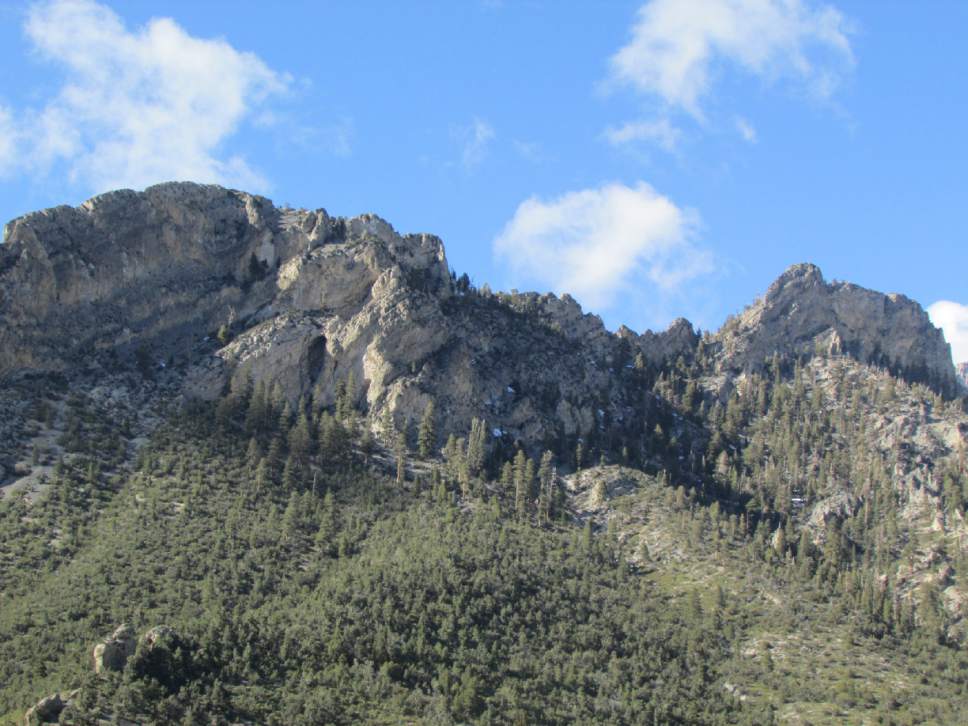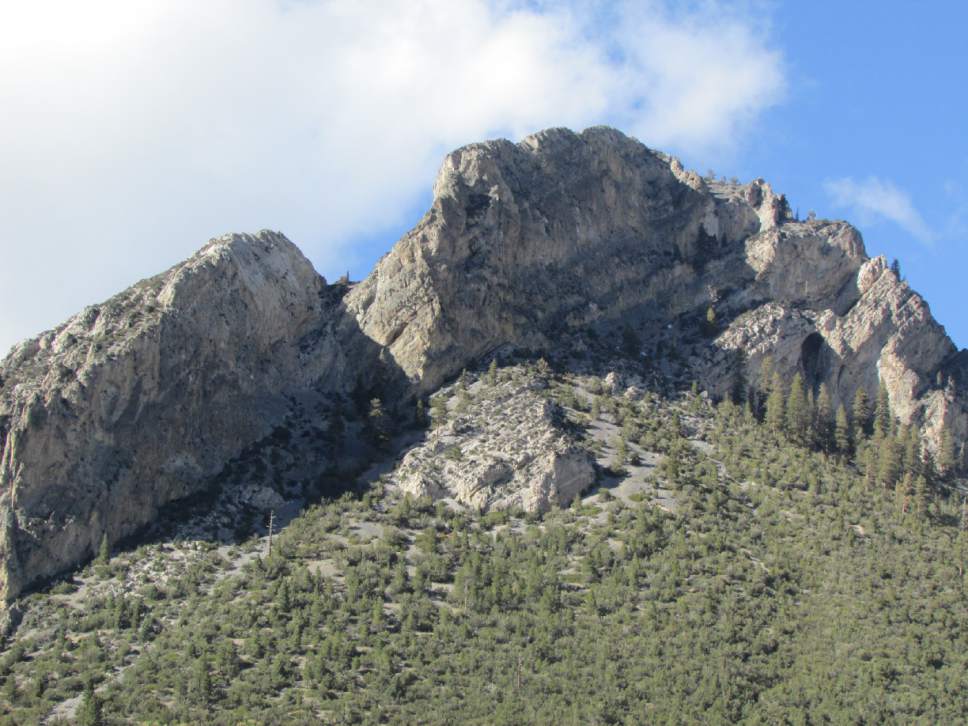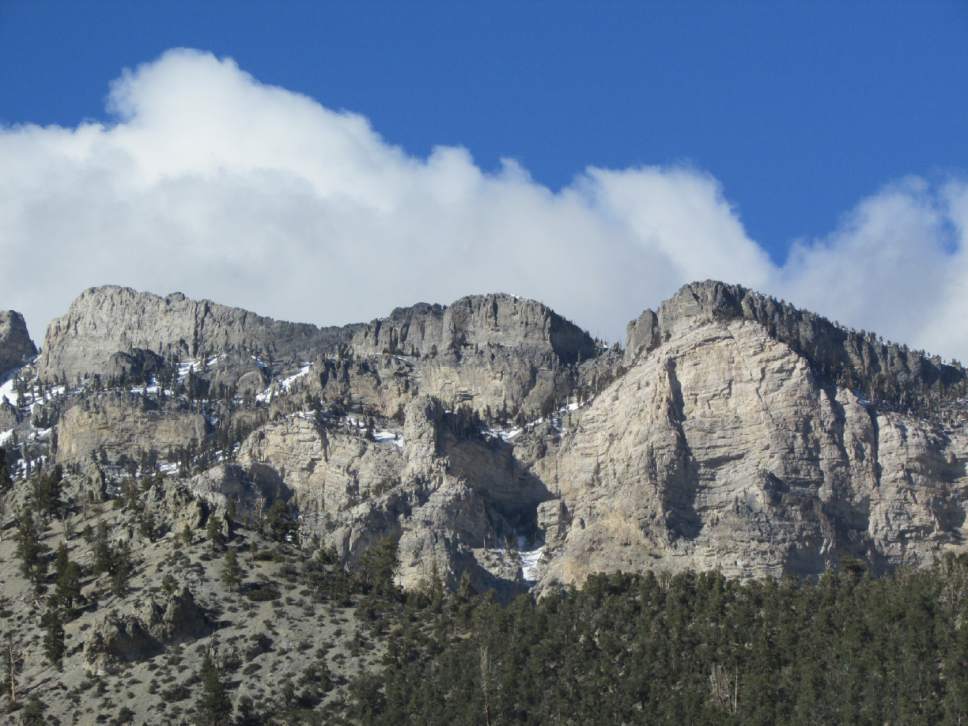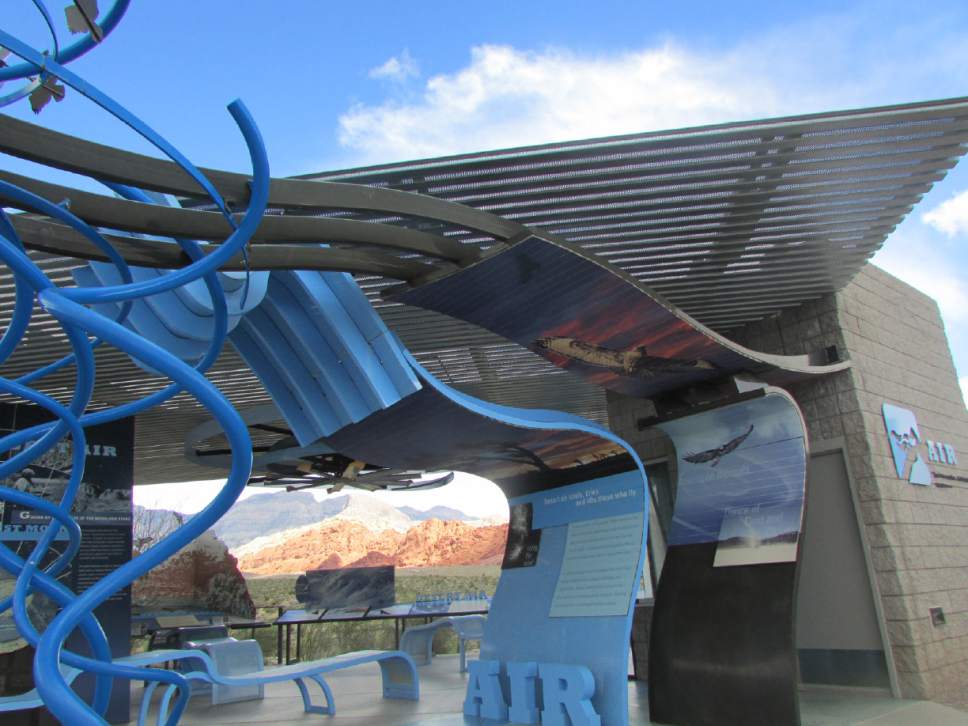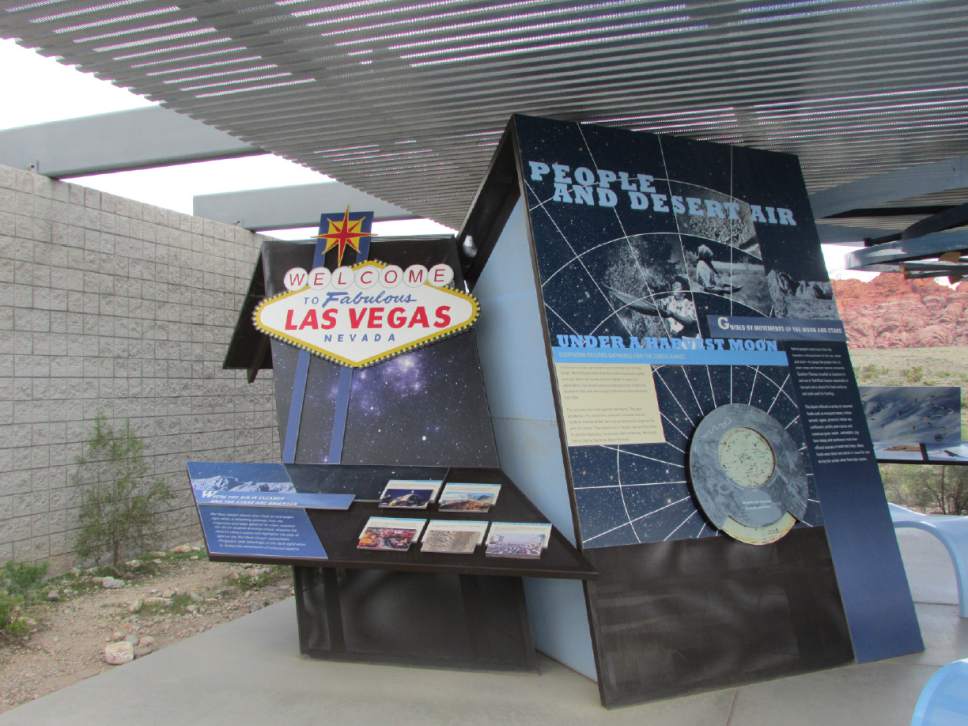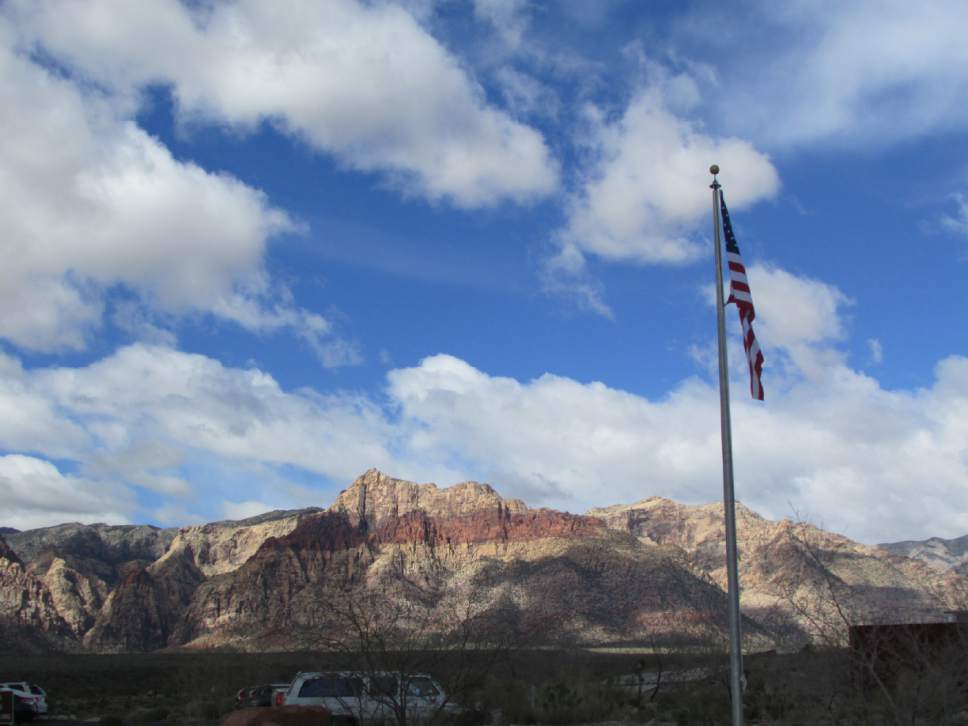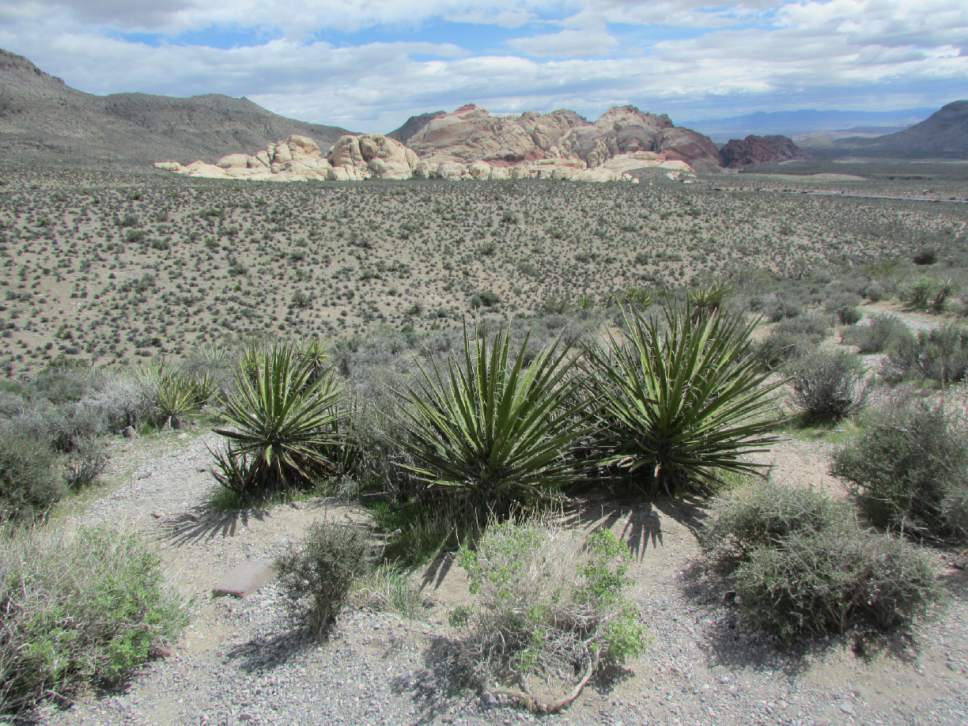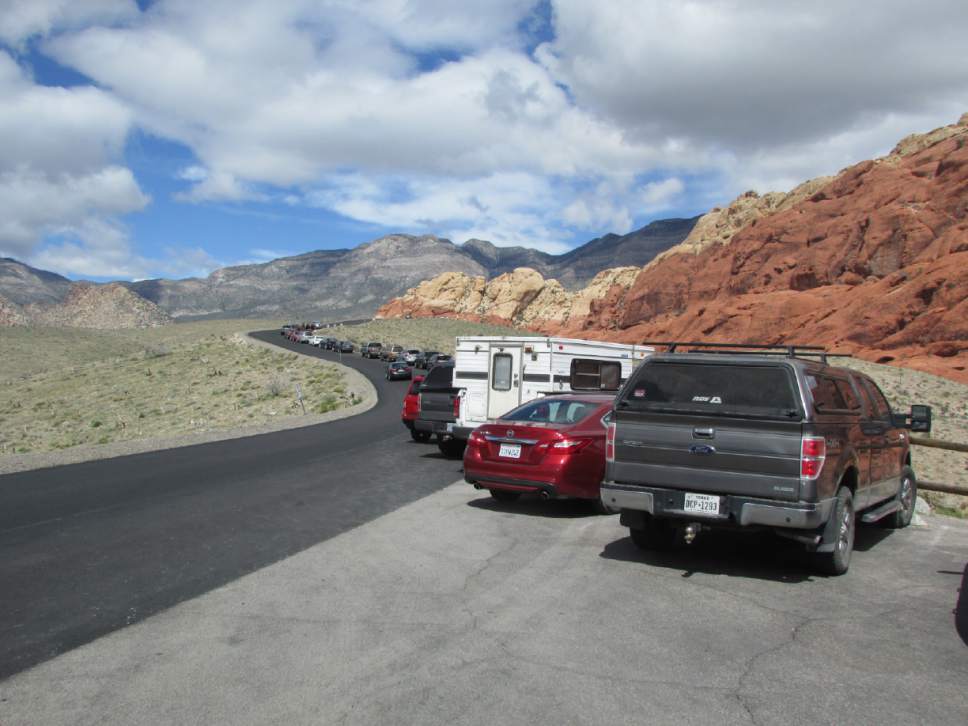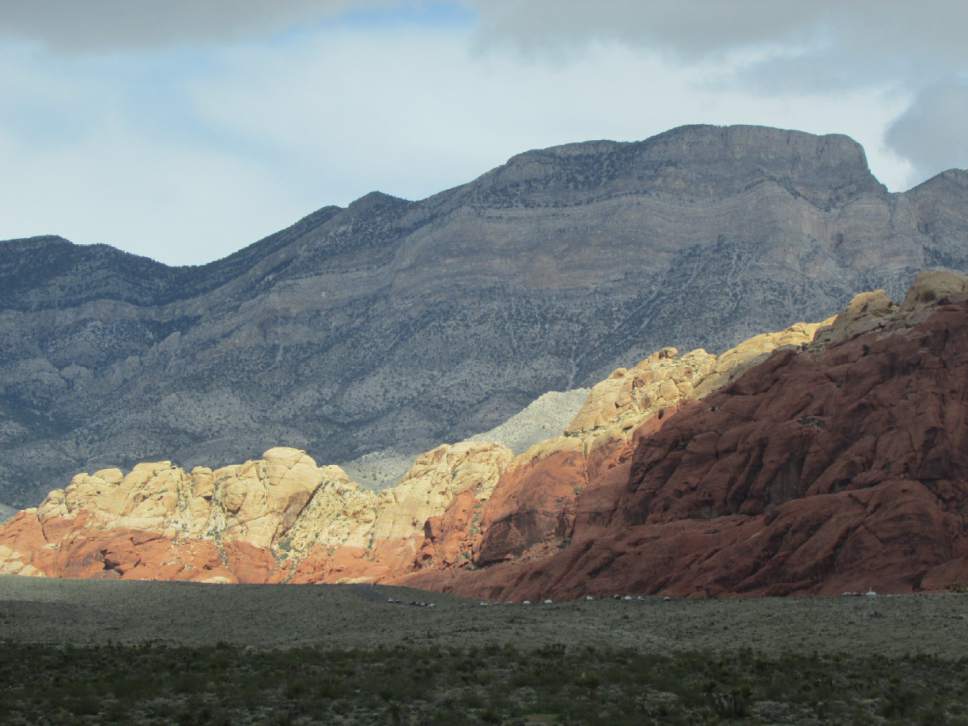This is an archived article that was published on sltrib.com in 2017, and information in the article may be outdated. It is provided only for personal research purposes and may not be reprinted.
Las Vegas • When travelers plan a trip to Las Vegas, most probably think of neon lights, glitzy shows, fancy casinos, world-class restaurants and luxurious pools and spas.
But there is a wilder side of Sin City — as in the outdoors wild. A surprising number of visitors find their way to nearby places like Red Rock Canyon, the Spring Mountains, Valley of Fire, Hoover Dam and Lake Mead, and even the Grand Canyon.
On a recent spring Thursday afternoon at the Red Rock Canyon National Conservation Area 17 miles west of the famous Las Vegas Strip, it was difficult to find a parking spot.
Lots were jammed and hiking trails and picnic areas filled with visitors enjoying a windy spring day.
The Spring Mountains National Recreation Area, about 42 miles west of Las Vegas and commonly known as Mount Charleston, was less crowded.
One doesn't expect to see snow and alpine scenery near Las Vegas, but this area, topped by 11,916-foot Mount Charleston, was largely closed due to snow. There is even a ski resort nearby, the Lee Canyon Ski and Snowboard Resort. This area is the equivalent of Salt Lake County's Cottonwood canyons, a place to escape the summer heat.
Valley of Fire State Park, 49 miles north of Las Vegas, features red rock, arches, hiking trails, a campground and archaeology. This venerable park, established in the 1930s, is often crowded and with good reason. Its scenery is spectacular.
Then there is Lake Mead National Recreation Area, known for its boating and fishing.
Hoover Dam is a popular destination for people wanting to tour one of America's great feats of engineering.
The proximity of Las Vegas to the Grand Canyon makes helicopter and fixed-wing overflights among the tours pushed by numerous vendors on The Strip.
Farther away, the newly designated Gold Butte National Monument — done on the same day Bears Ears was established in Utah and now part of the recent review ordered by the Trump administration — offers possibilities for those looking for a more rugged experience.
Here is an area-by-area description of the outdoor possibilities closest to Las Vegas:
Red Rock Canyon National Conservation Area
This beautiful and well-loved 195,819-acre area, which can be seen from parts of the Vegas strip, is managed by the Bureau of Land Management.
The first stop should be the visitor center, with outdoor exhibits concentrating on how air, water, fire and earth interact to create the sandstone exhibits. Docents offer information on area wildlife, including endangered desert tortoises as well as the Mojave Desert ecology.
Most visitors then take the 13-mile scenic drive, which offers access to most of the 26 hiking trails in the conservation area, picnic tables and beautiful overlooks.
Hikes range from easy to strenuous, with some as short as 300 feet and others as long as 14 miles. Kids especially enjoy the Calico Hills and Calico Tank hikes, because they afford an opportunity to scramble on the red slick rocks.
There is also a nearby horseback riding concession.
In order to protect the area, hours are limited and the area is closed at night. It opens daily at 6 a.m., closing at 5 p.m. from November through February, 7 p.m. in March, 8 p.m. from April through September, and 7 p.m. in October. The cost of a daily pass is $7, with federal passes also honored.
The bottom line is that this is a stunningly beautiful area that almost serves as a wild urban park for Las Vegas. But unless you are willing to hike a long distance, don't expect to find solitude. This place is packed.
For more information, visit http://www.redrockcanyonliv.org or http://www.blm.gov.
This beautiful area is perhaps the biggest surprise of wild Las Vegas with its cool alpine landscape — where locals go to escape the heat.
Managed by the U.S. Forest Service and known locally as Mount Charleston, this area consists of 316,000 acres.
Check with the Humboldt-Toiyabe National Forest website for current conditions. Perhaps the most useful website is http://www.gomtcharleston.com.
In late March, trails to Mary Jane Falls, Trail Canyon and Cathedral Rock were closed for the winter. Call 702-515-5400 for details.
The area features Forest Service campgrounds and picnic areas as well as a large visitor center.
The four developed campgrounds are in Kyle and Lee canyons in the Mount Charleston area. There are five developed picnic areas as well as mountain-biking and horseback-riding trails. In the winter, skiing and snow play can be available, though it's best to check in advance about conditions.
The area is also adjacent to three designated wilderness areas.
There is a nice lodge at Mount Charleston, a small, rustic town with dining options.
Again, don't expect solitude. The Spring Mountains National Recreation Area receives 1.2 million visitors a year.
This 40,000-acre state park, established in 1935 and the gem of the Nevada system, is between Mesquite and Las Vegas.
Day use is $10 per vehicle, while camping fees are $20 per night with an added $10 for sites with utility hookups. The park is open from sunrise to sunset unless camping. After-sunset activities are limited in those areas.
Facilities include two campgrounds with 72 units, a group area, five picnic areas, hiking trails and a modern visitor center.
Don't miss the scenic drive behind the visitor center, with hikes featuring sandstone, some narrow canyons and Indian rock writings. Kids will enjoy rock scrambling or playing in the pink sand.
For more details, visit http://www.parks.nv.gov, and click on the Valley of Fire tab.
Again, the amount of visitation here is surprising. You won't find a lot of solitude, but the scenery and wonderful hikes make a visit worthwhile.
Lake Mead National Recreation Area/ Hoover Dam
This huge reservoir's recreation is managed by the National Park Service, with 1.5 million acres that encompasses mountains, canyons, valleys as well as Lake Mead and Lake Mohave. There are also nine wilderness areas inside the park.
There are campgrounds, boat docks, beaches, lodging and marinas with boat rentals.
Activities include canoeing or rafting in Black Canyon below Hoover Dam, a visitor center and historic railroad hiking trail.
Visit http://www.nps.gov and search out Lake Mead for details.
The Bureau of Reclamation — http://www.usbr.gov — manages the Hoover Dam visitor experience. It's good to check ahead about tours, which have been down due to repairs to the elevators, but are expected to be offered soon.
Start by buying a visitor center admission ticket that includes a 10-minute movie on the Hoover Dam, covering how the dam was built and operates, and a chance to check out overlooks and visitor displays. There is another 10-minute presentation in the original exhibit building on the lower Colorado River region. The visitor center opens at 9 a.m., with doors closing at 4:15 p.m.
About 1 million visitors a year take the Hoover Dam tour. Tickets are required for the tour and often sell out. The first power-plant tour departs at 9:25 a.m. and the last one departs at 3:55 p.m. The first dam tour departs at 9:30 a.m. and the last one departs at 3:30 p.m. Dam tours are limited to 20 people per hour and may sell out several hours in advance of the last tour. The parking fee at the garage is $10.
Twitter: @tribtomwharton


